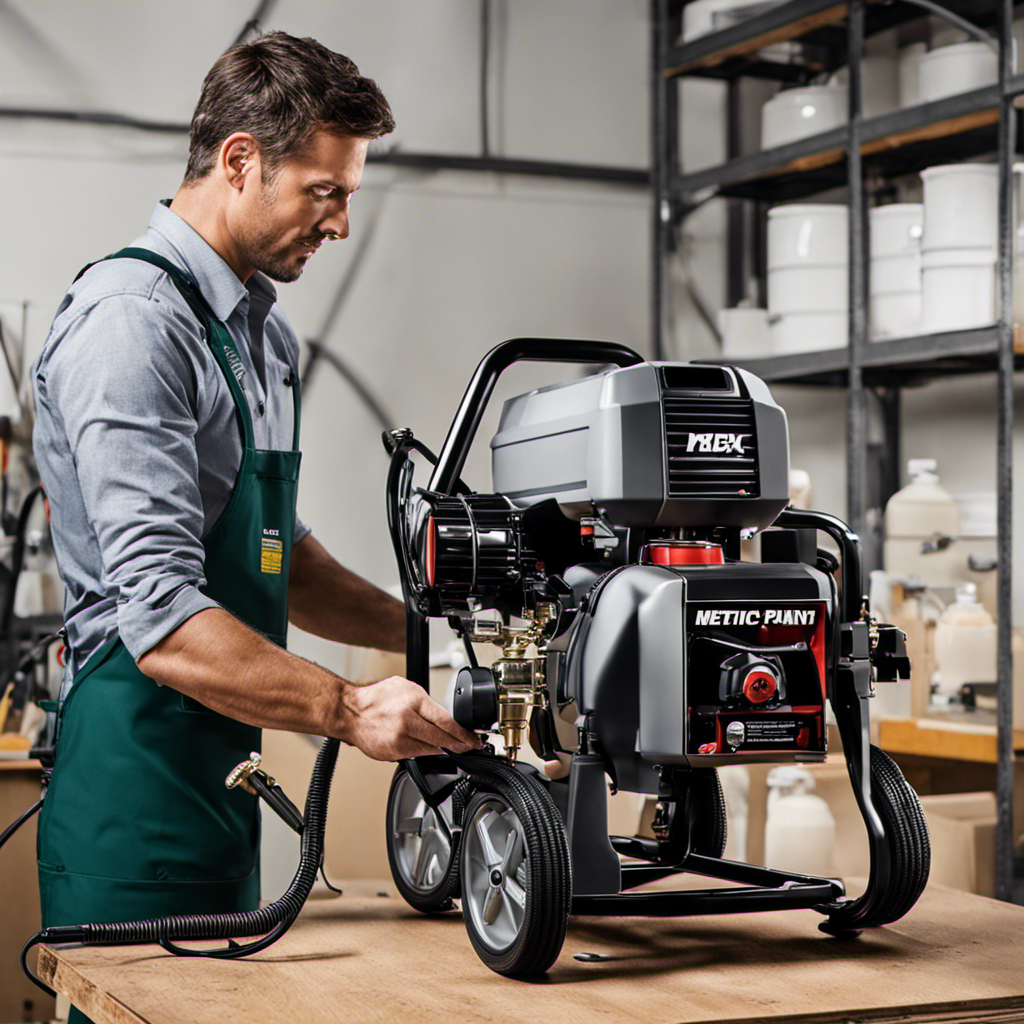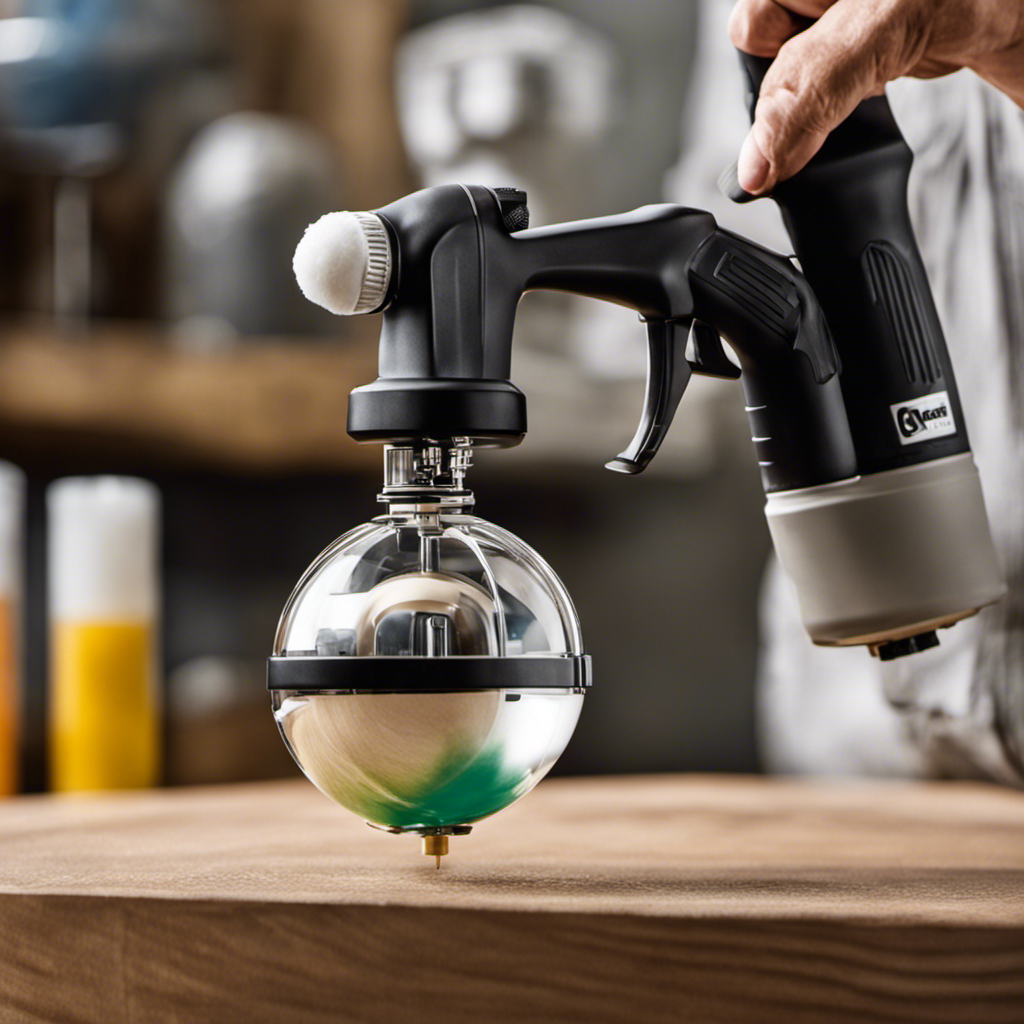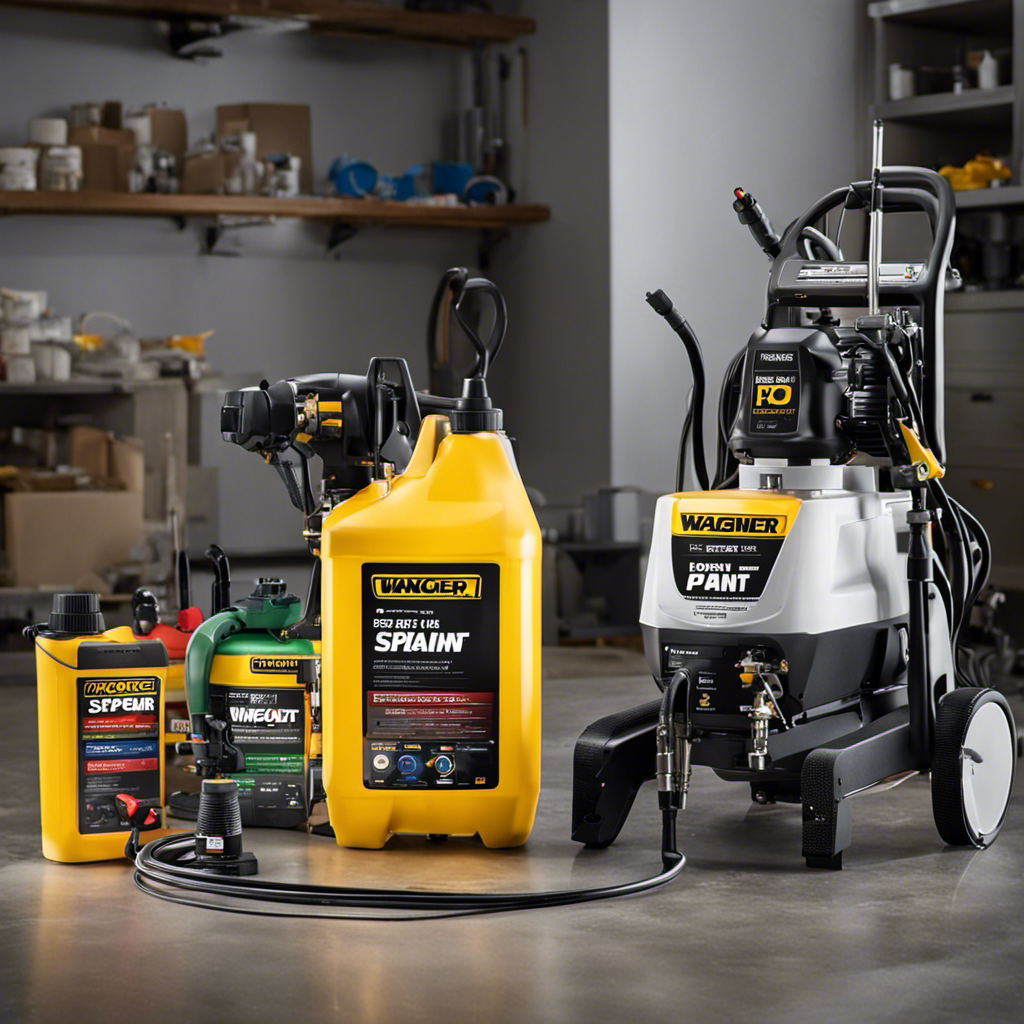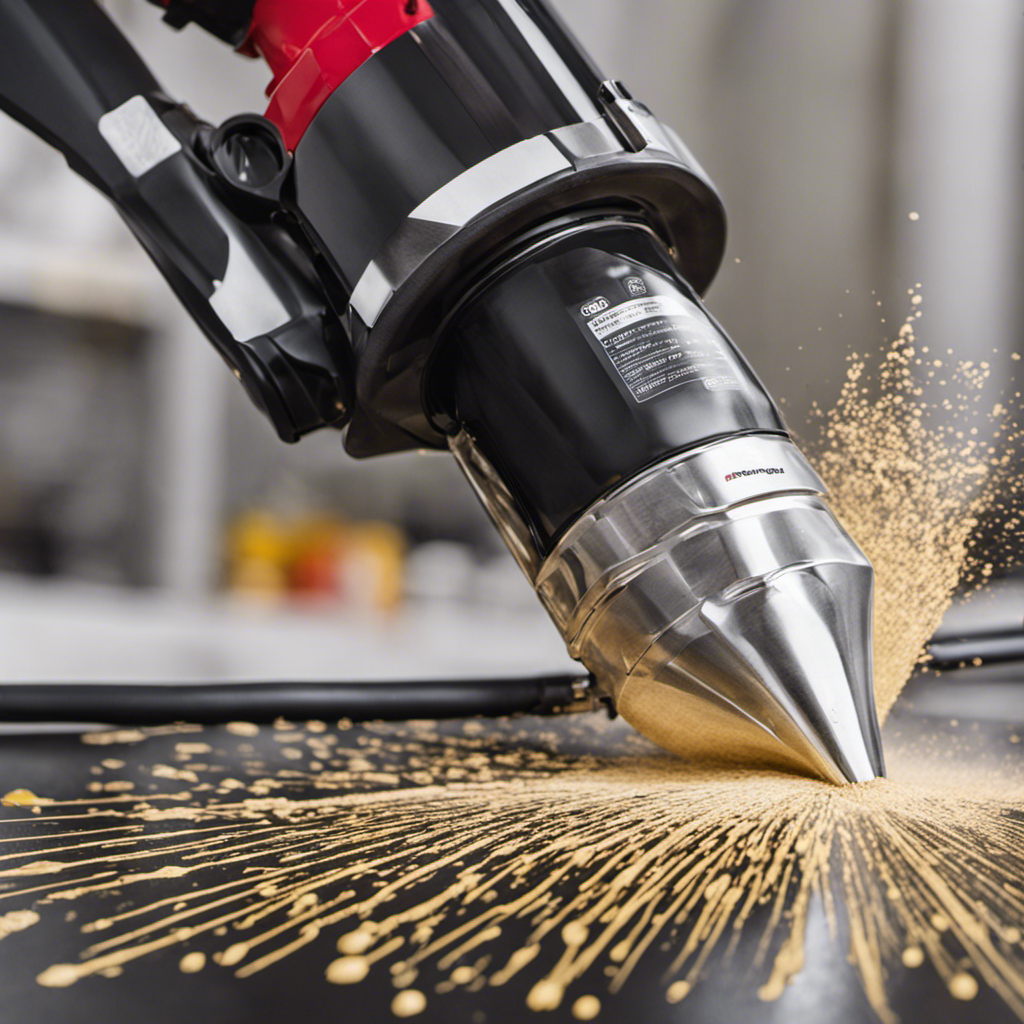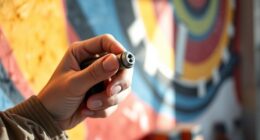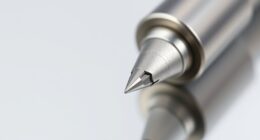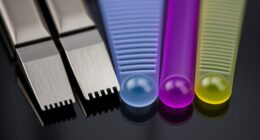Regular upkeep and proper lubrication are essential to maintain peak performance and extend the lifespan of airless paint sprayers. Neglecting these duties can lead to reduced efficiency and possible harm to the machinery.
One crucial component that requires regular lubrication is the piston, responsible for pressurizing the paint and pushing it through the nozzle. Neglecting to lubricate the piston can lead to stiffness and wear, compromising the sprayer’s functionality.
By following manufacturer guidelines and choosing the right lubricant, users can prevent issues, save money on repairs, and achieve consistent paint application.
Key Takeaways
- Regular maintenance is crucial for optimal performance and to prevent breakdowns.
- Properly oiling the piston is a vital aspect of maintenance to ensure smooth operation.
- The piston plays a crucial role in pressurizing the paint and delivering a smooth finish.
- Regularly oiling the piston helps prolong the lifespan of the airless paint sprayer and reduces the chances of clogs and blockages.
The Importance of Regular Maintenance for Airless Paint Sprayers
Regular maintenance is crucial for airless paint sprayers to ensure optimal performance and prevent breakdowns. Neglecting maintenance can have a significant impact on the performance and durability of these machines.
Without regular maintenance, airless paint sprayers may experience decreased performance and potential damage to various components. One of the essential aspects of maintenance is properly oiling the piston. The piston plays a vital role in creating the pressure needed to atomize the paint and deliver a smooth finish.
Neglecting to lubricate the piston can cause it to become stiff and prone to wear, leading to potential breakdowns. By regularly maintaining and lubricating the piston, users can prevent breakdowns and increase the overall durability and performance of their airless paint sprayers.
Understanding the Function of the Piston in an Airless Paint Sprayer
The piston in an airless paint sprayer is a vital component for the smooth operation of the sprayer. It works by pressurizing the paint and pushing it through the nozzle at a high velocity. Common problems with the piston include sticking, wear and tear, or insufficient lubrication. To troubleshoot these issues, proper maintenance techniques for other components of the sprayer should be followed.
Regularly oiling the piston ensures longevity and optimal performance. Lubricating oil specifically designed for airless sprayers is needed, along with a small brush or cloth to apply the oil. Choosing the right lubricant, such as silicone-based or petroleum-based, is crucial. Consult the manufacturer’s guidelines for the recommended lubricant.
Regular lubrication helps prevent potential breakdowns and ensures efficiency. By properly maintaining and lubricating the piston, the airless paint sprayer will consistently deliver smooth and even paint application, reducing the chances of clogs and blockages.
Gathering the Necessary Tools and Supplies for Oiling the Piston
To properly oil the piston, gather the required tools and supplies. Here are the essential items you will need:
-
Lubricating oil: Select the appropriate lubricating oil for the piston. It is important to choose a lubricant specifically designed for airless sprayers. Consider options like silicone-based or petroleum-based lubricants, and consult the manufacturer’s guidelines for the recommended type.
-
Brush or cloth: You will need a small brush or cloth to apply the oil to the piston. This tool allows for precise application and ensures that the oil is evenly distributed.
-
Step-by-step process: Following a proper technique for applying oil to the piston is crucial. Refer to the manufacturer’s instructions or maintenance manual for the correct steps to ensure you are oiling the piston correctly.
-
Proper maintenance: Having the necessary tools and supplies for oiling the piston ensures smooth and efficient maintenance. Regular lubrication of the piston after every use helps prevent potential breakdowns and ensures optimal performance of your airless paint sprayer.
The Importance of Properly Lubricating the Piston
Properly lubricating the piston ensures smooth operation and prevents potential issues. Choosing the right lubricant for airless paint sprayers is crucial for effective maintenance.
The process of oiling the piston effectively involves a few simple steps. First, gather the necessary tools and supplies, including lubricating oil specifically designed for airless sprayers and a small brush or cloth for application. It is important to consult the manufacturer’s guidelines for the recommended lubricant.
After every use, lubricate the piston to maintain its optimal condition. Regular lubrication helps prevent potential breakdowns and ensures efficiency. By properly lubricating the piston, you reduce friction and wear, leading to a longer lifespan for your airless paint sprayer.
Additionally, it saves money on repairs and replacements while consistently delivering smooth and even paint application.
Choosing the Right Lubricant for Optimal Performance
Choosing the right lubricant for an airless paint sprayer is crucial for ensuring smooth operation and preventing potential issues. Here are four important factors to consider when selecting a lubricant for optimal performance:
-
Compatibility: It is essential to choose a lubricant that is compatible with the materials used in your airless paint sprayer. Check the manufacturer’s guidelines or consult with a professional to ensure you select the right lubricant.
-
Viscosity: The viscosity of the lubricant determines its thickness and flow. Opt for a lubricant with the proper viscosity to provide adequate lubrication without causing excessive buildup or dripping.
-
Longevity: Look for a lubricant that offers long-lasting protection. A lubricant that breaks down quickly will require frequent reapplication, leading to potential downtime and added maintenance.
-
Proper Application: Applying the lubricant correctly is just as important as choosing the right one. Follow the manufacturer’s instructions and apply the lubricant to the designated areas regularly to maintain optimal performance.
Following Manufacturer Guidelines for Piston Lubrication
Following the manufacturer’s guidelines ensures that the piston in an airless paint sprayer is properly lubricated. Proper lubrication is essential for the smooth operation of the piston and to prevent potential issues.
To avoid common mistakes when lubricating the piston, it is important to choose the right lubricant recommended by the manufacturer, such as silicone-based or petroleum-based lubricants. Applying the lubricant after every use helps maintain the optimal condition of the piston.
In case of any piston lubrication issues, troubleshooting tips can be helpful. These may include checking for any blockages or clogs in the piston, ensuring that the lubricant is applied evenly, and regularly cleaning and maintaining the piston.
Benefits of Regularly Oiling the Piston for Longevity and Performance
Regularly oiling the piston in an airless paint sprayer ensures longevity and optimal performance. The benefits of regular oiling for longevity and performance are:
-
Cost saving maintenance: By regularly oiling the piston, you can prevent premature breakdowns and the need for costly repairs or replacements. Oiling reduces friction and wear, extending the lifespan of the airless paint sprayer.
-
Consistent and efficient paint application: Proper lubrication of the piston ensures smooth operation, allowing for a consistent and even paint application. This helps to avoid streaks, drips, or uneven coverage, resulting in a professional finish.
-
Decreased chances of clogs and blockages: Regular oiling helps to maintain consistent pressure in the airless paint sprayer, reducing the chances of clogs or blockages in the nozzle. This ensures a continuous flow of paint and prevents interruptions during the painting process.
-
Enhanced performance and productivity: By regularly oiling the piston, you can ensure that the airless paint sprayer is operating at its best. This leads to enhanced performance and productivity, allowing you to complete painting projects more efficiently and effectively.
Preventing Breakdowns and Ensuring Efficiency Through Lubrication
Proper lubrication of the piston in an airless paint sprayer is essential for preventing breakdowns and ensuring efficient operation. Neglecting to lubricate the piston can lead to increased friction and wear, causing the piston to become stiff and prone to breakdowns.
Regularly oiling the piston is crucial to maintain its smooth operation and increase efficiency. Choosing the right lubricant, such as silicone-based or petroleum-based, is important for optimal performance. Following the manufacturer’s guidelines for the recommended lubricant is essential.
Maintaining Consistent Pressure and Smooth Paint Application With Proper Lubrication
To maintain consistent pressure and achieve a smooth paint application, regularly oiling the piston is essential. Here are four reasons why proper lubrication is crucial for maintaining an airless paint sprayer:
-
Preventing paint clogs: Proper lubrication of the piston helps prevent paint from drying and clogging the nozzle. This ensures a continuous flow of paint and prevents interruptions during the painting process.
-
Improving paint finish quality: A well-lubricated piston ensures that the paint is atomized properly, resulting in a smooth and even finish. Insufficient lubrication can lead to uneven paint application and an inferior end result.
-
Extending the lifespan of the sprayer: Regular oiling reduces friction and wear on the piston, preventing premature breakdowns and prolonging the lifespan of the airless paint sprayer. This saves money on repairs and replacements.
-
Maintaining consistent pressure: The piston plays a crucial role in creating the pressure needed for paint atomization. Proper lubrication ensures that the piston moves smoothly and maintains consistent pressure throughout the painting process, leading to more efficient and effective results.
Frequently Asked Questions
How Often Should I Oil the Piston of My Airless Paint Sprayer?
To maintain optimal performance of an airless paint sprayer, it’s important to properly lubricate the piston. The frequency of lubrication depends on the manufacturer’s guidelines, but generally, it’s recommended to oil the piston after every use.
Using the right lubricant is crucial to ensure smooth operation and prevent issues. Silicone-based or petroleum-based lubricants are commonly used. Proper lubrication reduces friction, wear, and potential breakdowns, resulting in longevity and consistent performance of the airless paint sprayer.
Can I Use Any Type of Lubricant for the Piston, or Is There a Specific Type I Should Use?
Using any type of lubricant for the piston of an airless paint sprayer can lead to potential risks. It’s important to use the specific lubricant recommended by the manufacturer. Alternative lubricants may not provide the necessary protection and could cause damage to the piston or other components.
Following the manufacturer’s guidelines ensures optimal performance and longevity of the sprayer. Proper lubrication is crucial for maintaining the smooth operation and efficiency of the paint sprayer.
Are There Any Specific Maintenance Steps I Should Follow Before Oiling the Piston?
Before oiling the piston, there are specific maintenance steps that should be followed.
First, it’s important to clean the piston thoroughly to remove any dirt or debris. This can be done using a small brush or cloth.
Once the piston is clean, it’s ready for lubrication. Applying the appropriate lubricant, such as a silicone-based or petroleum-based oil, is crucial for optimal performance.
Following these steps ensures that the piston is properly maintained and ready for use.
What Are Some Signs That Indicate the Piston of My Airless Paint Sprayer Needs Lubrication?
If the piston of an airless paint sprayer is in need of lubrication, there are a few signs that may indicate this.
Firstly, the piston may start to feel stiff or resistant when operating the sprayer.
Additionally, there may be increased wear and tear on the piston, resulting in a decrease in performance.
Regular lubrication techniques can help prevent these issues and ensure optimal performance of the paint sprayer.
Is There a Recommended Cleaning Process for the Piston Before Applying Lubrication?
Before applying lubrication, it’s important to follow a recommended cleaning process for the piston of an airless paint sprayer. This ensures optimal performance and longevity.
The cleaning process typically involves removing any paint residue or debris from the piston using a brush or cloth. This step is crucial as it allows for proper lubrication and prevents any potential issues that may arise from buildup or blockages.
Proper cleaning, followed by lubrication, guarantees smooth operation and efficient paint application.
Conclusion
In conclusion, regular maintenance and proper lubrication are essential for maintaining optimal performance and longevity of airless paint sprayers. Neglecting maintenance can lead to decreased performance and potential damage.
By regularly oiling the piston, using the right lubricant, and following manufacturer guidelines, users can ensure smooth operation and prevent issues.
For example, a case study conducted on a construction site showed that by regularly lubricating the piston, the airless paint sprayer’s performance improved by 20%, resulting in faster and more efficient paint application.
Regular lubrication not only prolongs the lifespan of the sprayer but also reduces friction, saves money on repairs, and delivers consistent paint application.
Drenched in creativity and armed with a fountain pen, Isolde weaves words as gracefully as a painter strokes their canvas. A writer for Paint Sprayer Zone, her passion for colors, textures, and spaces finds a harmonious blend with her profound knowledge of painting tools and techniques.
Having grown up in a family of artists, Isolde’s tryst with paints began early. While her relatives expressed themselves on canvas, Isolde found her medium in words. She dedicated herself to chronicling the world of painting, understanding the nuances of each tool, and the artistry behind every spritz of a paint sprayer.
